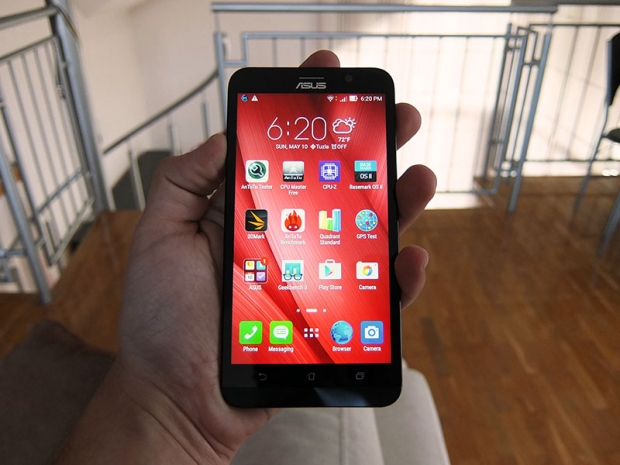Index
Review: Alternative flagship for value minded consumers
The new Asus Zenfone 2 is all about offering high-end specs at mid-range prices, but does it really live up to the hype?
The Zenfone 2 family was announced a couple of months ago, but the rollout has been slow. Asus has a few different SKUs and different price points, but today we will be looking at the mid-tier Zenfone 2 with 4GB of RAM and 32GB of internal storage.

Right off the bat, we must point out that the Zenfone 2 is almost unique in its choice of chipset. Qualcomm and MediaTek reign supreme as the world’s biggest smartphone processor suppliers, but the Zenfone 2 boasts an Intel Inside sticker. It is powered by Intel Moorefield silicon, and our test unit came with an Atom Z3560 processor clocked at 1.8GHz, with 4GB of RAM and 32GB of internal storage.

Aside from the unorthodox chipset, the Zenfone doesn’t offer much in the way of unique features. It has a 5.5-inch 1080p display, 13-megapixel camera, the regular range of connectivity options and an all-plastic build.
While it has some high-end credentials, the pricing is decidedly mid-range, so the 4GB/32GB unit sells for $325, while the 2GB/16GB model goes for about $260. As a time limited offer, this particular version is available for $275 via GearBest (coupon ASZ4GB).
Not bad, but let’s take a closer look.
Design and Build Quality
Although the Zenfone 2 sports a brushed metal look, the removable back is plastic.
Still, it’s very good plastic, so it feels tough and there’s practically no flex. The Zenfone 2 looks like a flagship, yet prices start at just over $250.
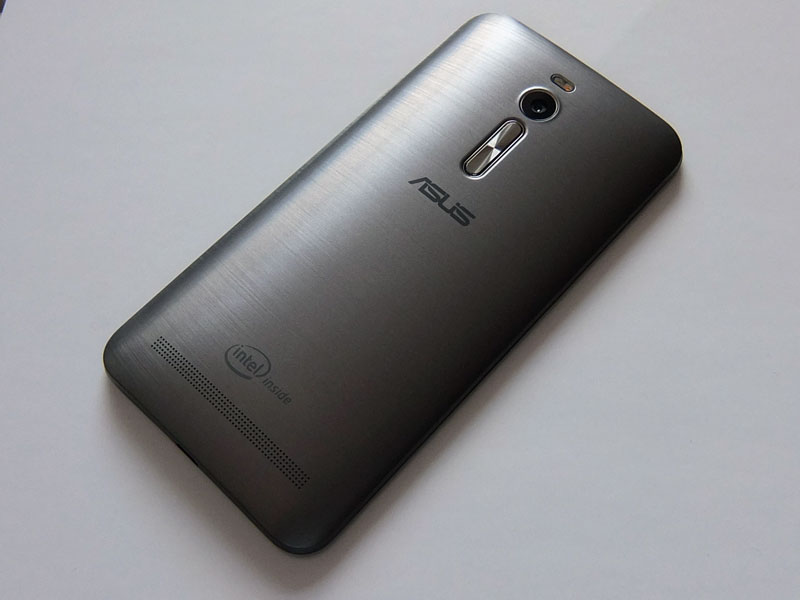
You could be forgiven for thinking this is a unibody design, because it sure looks like one.
Since this is a 5.5-inch phone, or phablet, it’s not very compact. It measures 152.5 x 77.2 x 10.9 mm (5.99 x 3.03 x 0.43 inches) and the thickness is probably causing a few alarm bells to go off right now. Luckily, the Zenfone 2 is not fat, well, at least not Elvis-in-Vegas fat.

The back is curved, so it’s 10.9mm thick at the centre, but it tapers off to a much more manageable 4mm at the edges. This approach has a couple of implications. There is no room for the volume rocker on the sides, so Asus installed it at the back, mimicking LG’s approach. The curved back reminds of HTC One series phones, but there’s nothing wrong with that because the One is a gorgeous device. The tapered edges also appear to result in somewhat bigger bezels.

The power button is located at the top, which is really not an ideal position on such a big device. Fortunately, you won’t have to use it that often. You can access the unlock screen with a double tap, and you can lock it the same way. The buttons feature the same brushed metal look and feel just as good as the back.
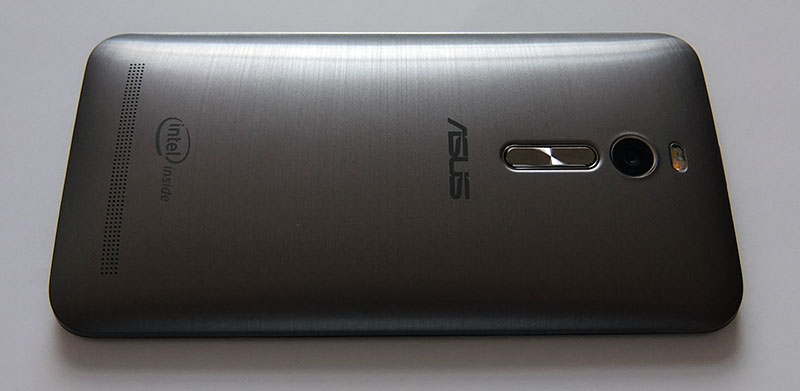
Although it’s all plastic, the Zenfone 2 does not feel cheap, not even close. The faux metal back feels great. It doesn’t feel cold to the touch like metal, but it sure looks like metal, and feels just as strong. Another bit of good news is that the texture is very resistant to fingerprints. The phone is available in black, white, red, grey and gold. Additional multicolour Fusion and Illusion series designs will be available as well. Asus also has a range of stylish accessories, ranging from headphones, through smart covers and powerbanks, to external LED flashes for the Zenfone 2 family.
The spacious screen is covered by a pane of Gorilla Glass 3, so it feels good and should stand up to a lot of punishment. The glass is flat, none of that curved 2.5D stuff here.
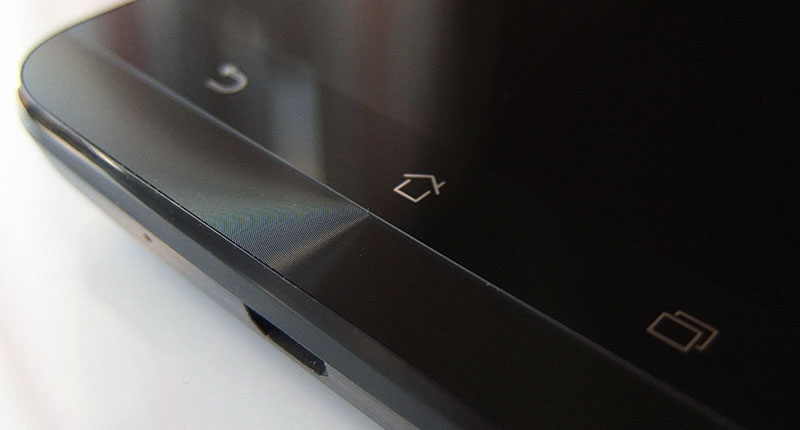
We like the way the Zenfone 2 looks, and the way it feels. Plastic or not, the Zenfone gives off the impression of a premium device. Luckily, the pricing is not premium.
Asus Zenfone 2 Specs and Performance
Like we pointed out in the introduction, the Zenfone 2 soldiers on with Intel silicon in a market dominated by Qualcomm and MediaTek. There is nothing wrong with this, the more the merrier, and the Z3560 has a few things going for it.
Before we get to the specs, we need to point out that there are quite a few versions of the Zenfone 2, and we ended up with the ZE551ML model, the 4GB SKU to be precise. It’s available in three flavours, with a Z3560, 2GB of RAM and 16GB of storage, with the same processor with 4GB/32GB (which we got our hands on), and a flagship model with a faster Z3580 processor and 4GB of RAM, with 32GB or 64GB of storage.
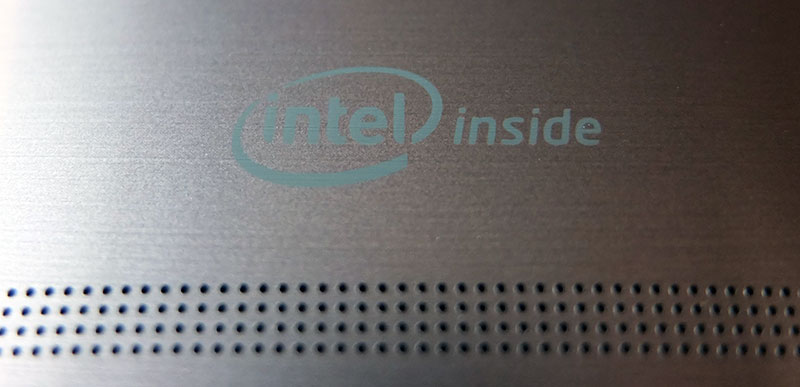
Here’s the Asus Zenfone ZE551ML spec:
- SoC: Intel Atom Z3560, 22nm
- CPU: Four Moorefield 64-bit cores, 1.8GHz
- GPU: PowerVR G6430
- RAM: 4GB
- Storage: 32GB internal, microSD slot up to 64GB
- Display: 5.5-inch 1080p IPS, Gorilla Glass 3
- OS: Android 5.0 (Asus ZenUI launcher)
- Rear camera: 13-megapixel, f/2.0 aperture, dual tone LED flash
- Front facing camera: 5-megapixel sensor, 85 degree FOV
- Battery: 3000mAh lithium ion, non-replaceable
- Dimensions: 152.5 x 77.2 x 10.9 mm (5.99 x 3.03 x 0.43 inches)
- Weight: 170g
- Connectivity: 802.11ac WLAN, Bluetooth 4.0, NFC, FM
- Sensors: ambient light, proximity, gesture, gravity, compass, GPS, A-GPS, GLONASS.
- Network support: UMTS/WCDMA/TD-SCDMA/TDD-LTE/FDD-LTE
- 2G: 850/900/1800/1900
- 3G: 850/900/1900/2100
- 4G : FDD-LTE, TDD-LTE (region specific bands)
- SIM: dual micro SIM
While the Zenfone 2 can be considered a mid-range device by virtue of its pricing, the spec sheet leaves little room for improvement. The phone comes with a powerful processor, loads of RAM, ample internal storage and loads of connectivity options, along with impressive network support.
However, in some respects it falls short of 2015 flagships. The 13-megapixel camera is a mid-range affair. There is no fancy fingerprint reader, optical image stabilization or other bleeding edge features. If you’re not into gimmicks, you probably won’t miss out on much.
The big question is performance. Can the Intel SoC keep up with similarly priced solutions from Samsung, Qualcomm and MediaTek? Does the additional RAM help? Let’s take a closer look.
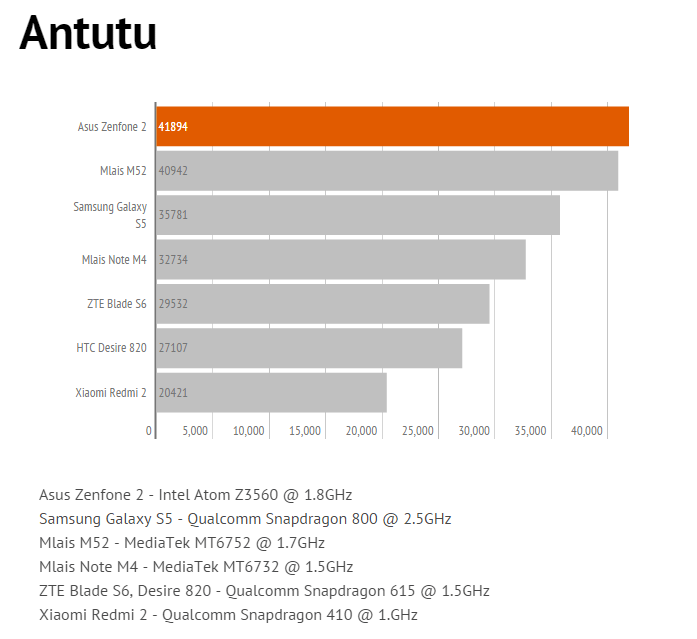
In Antutu, the Atom scores well and easily outpaces mid-range offerings from Qualcomm, although MediaTek's octa-core is very close.
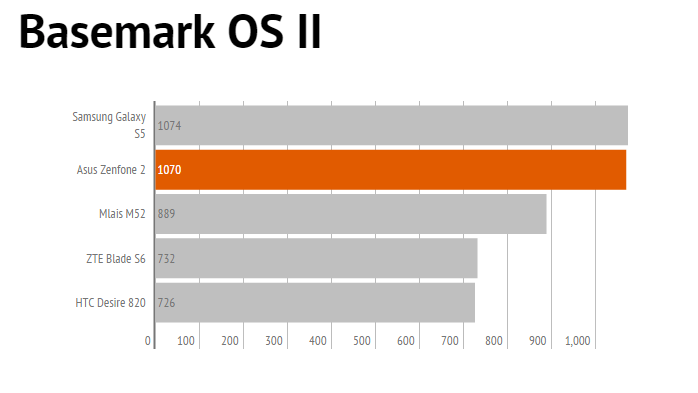
In Basemark OS II, the Zenfone matches the Galaxy S5 and beats Qualcomm and MediaTek mid-range parts by 10-20%
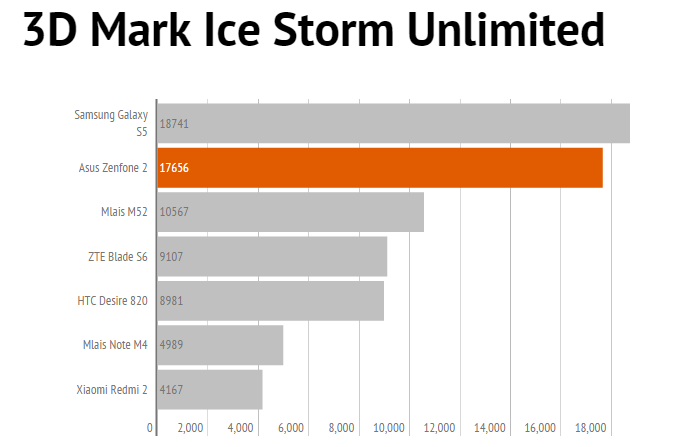
Although MediaTek and Qualcomm mid-range chips tend to offer a lot of performance in CPU-bound benchmarks, Intel's chipset pulls ahead in 3Dmark, although it fails to beat the Adreno 330 on the Galaxy S6.
The Zenfone 2 can’t match the current crop of flagships in terms of sheer performance, but it’s not that far off, either. It’s roughly on a par with last year’s flagships like the Samsung Galaxy S5. Given its price, comparing the Zenfone to $500 or $600 flagships does not make much sense, but it still manages to hold its own in many tests.
Personally, I am not sold on the whole 4GB concept and I believe it has a lot more to do with marketing than real-world performance. Unfortunately, I did not get a chance to try out the 2GB version, but I suspect the results would be very similar in most scenarios. However, in case you tend to keep a lot of “heavy” apps open at all times, if you like to have a game or two running in the background, 4GB should make a difference. For the average user, it won’t mean that much.
The Intel SoC is pretty much on a par with Snapdragon 800 and 801, and it’s not that far behind the new Snapdragon 810. The PowerVR G6430 GPU has been around for a while and was used in the Apple A7 SoC (iPad Air, iPhone 5S). It’s not the fastest GPU around, but it still packs a punch.
Overall, the Zenfone 2 performs admirably in most tests, ending up 15-25% slower than flagship devices that cost twice as much.
Audio, Display and Camera Quality
The Zenfone features a 5.5-inch 400-nit display in 1920x1080. The panel is protected by Gorilla Glass 3 and has relatively big bezels. The good news is that viewing angles are good, which we’ve come to expect from IPS panels. However, the screen is not very bright and contrast is average at best. Outdoors, the display may struggle with a lot of ambient light. In addition, the Auto brightness setting is a tad on the low side and could do with a bit more tweaking.

Pixel density (~400ppi) is not an issue, and neither are the colours. Asus also provides a few convenient pre-sets and additional controls, allowing you to tweak the colour temperature and a few other settings with a few swipes. This is a nice touch.
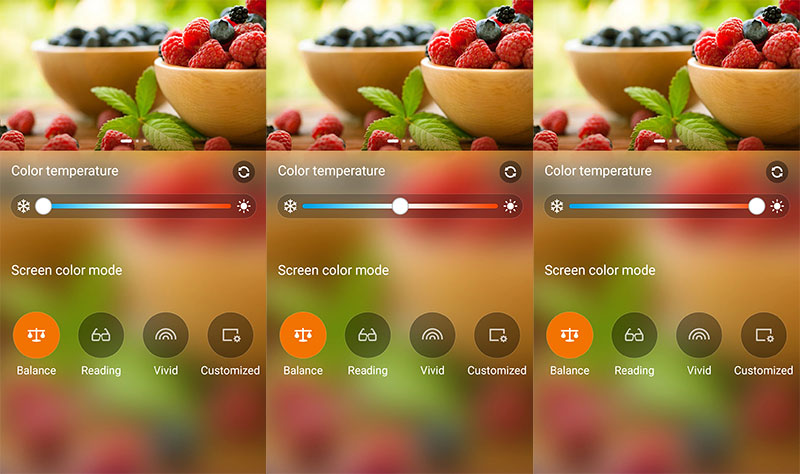
As far as audio quality goes, the rear speaker isn’t very loud. You could have expected more, looking at the oversized speaker grille, but there’s just one driver and it’s not very powerful. On the other hand, line out is very good indeed. This is good news for all you fitness buffs out there, if you’re addicted to your headphones, the new Zenfone won’t let you down. Speaking of headphones, the Zenfone 2 does not ship with a headset.
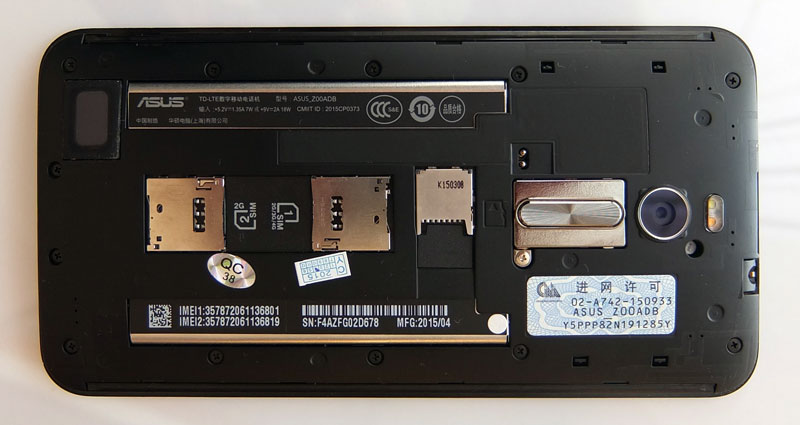
Phone functionality is obviously not a problem for the Zenfone. Reception is good, and so is audio. The noise cancelling mic does a good job and there is really nothing to complain about. This is a dual SIM device with dual standby, which could be a selling point for some consumers.
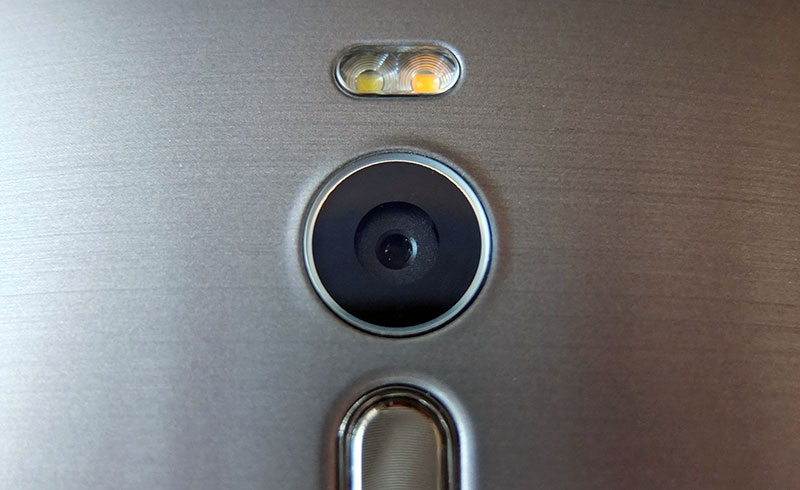
The camera, however, leaves much to be desired. A 13-megapixel sensor with a relatively fast f/2.0 lens and dual-tone flash looks good on paper, but the results aren’t very impressive. While this is a relatively inexpensive device, we’ve seen much cheaper phones with similar cameras (in some cases eve better ones). The devil is in the detail, literally.

Low-light images suffer from aggressive noise reduction, which kills much of the detail in the process. As our indoor samples show, even in relatively good light, the Zenfone’s camera hammers the images with loads of post-processing. The end result is visible in 100% crops, and the watercolour effect.
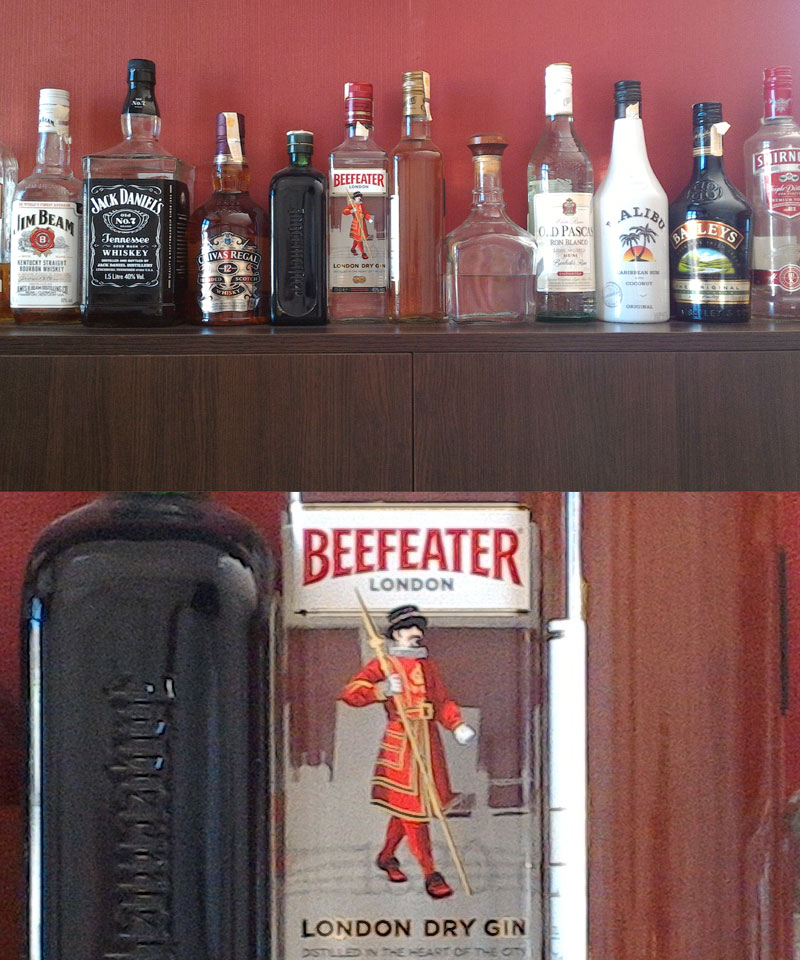
Outdoor shots are noticeably better, but simply snapping a few magnolia flowers on a lovely spring day doesn’t really tell us much about image quality. We decided to try the Zenfone 2 in a much more demanding scenario, testing dynamic range with very strong backlight, in clear skies.
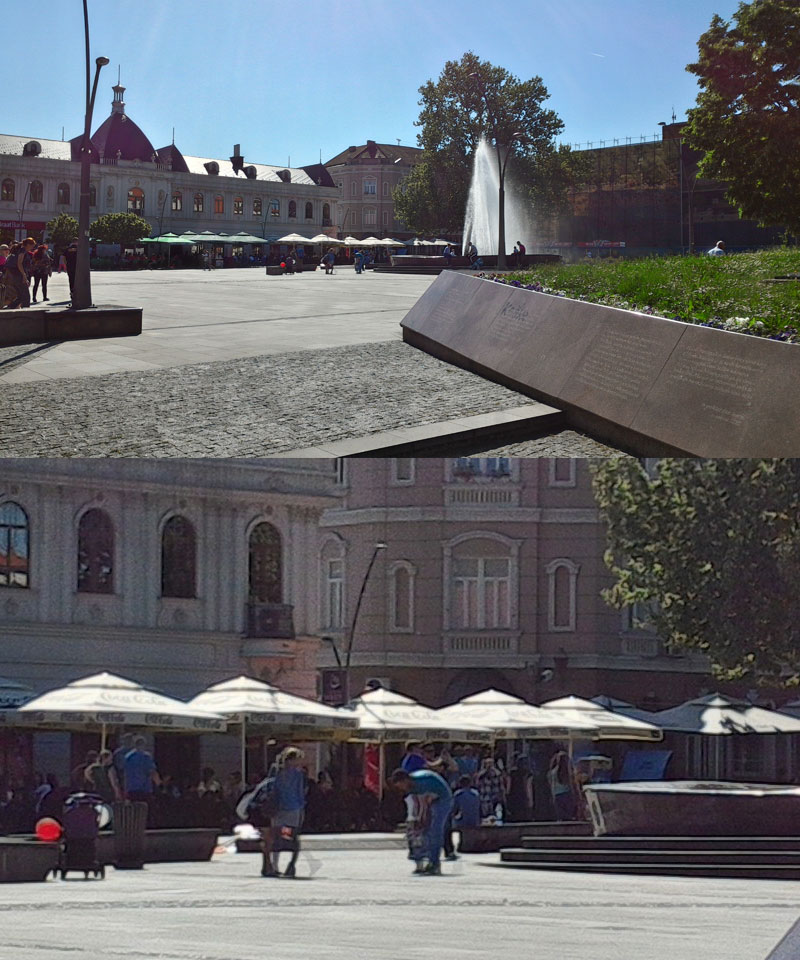
This scenario is presents a challenge not only for smartphone cameras, but proper compact cameras, so the results were average. With the sun directly in front of the lens, HDR did not help much – the camera struggled with limited dynamic range and washed out colours.
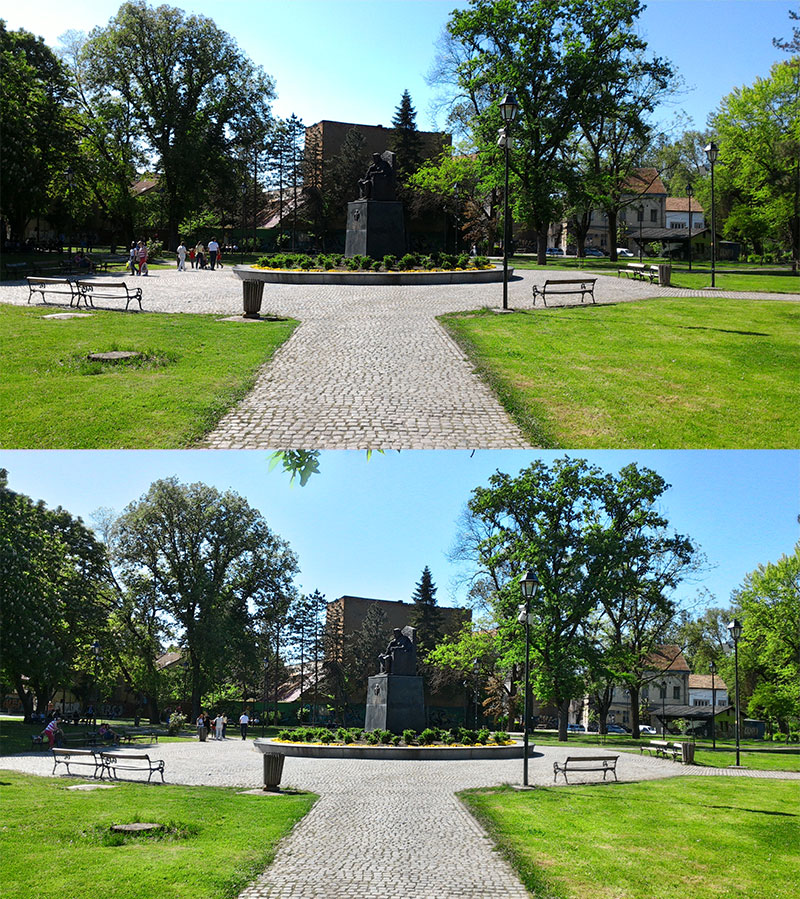
In the park, we got somewhat better results. The colours were ok, maybe even too saturated rather than washed out. The good news is that HDR is very fast and the algorithm copes with ghosting quite well.
There is no 4K video support and the camera maxes out at 1080p. Video quality is average and quite a few details are lost to compression.
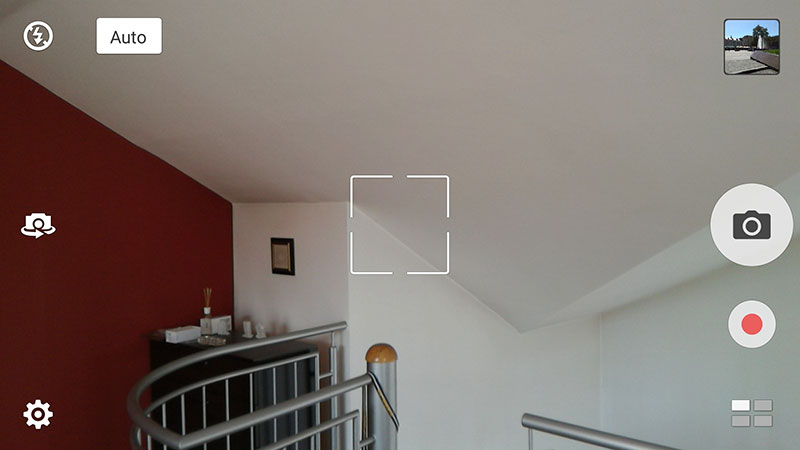
The UI is practical and looks good, no complaints here.
All in all, the camera could have been better. While it’s more than adequate on paper, the results are unimpressive and on a par with some cheaper devices. We expected a bit more, especially given the 10.9mm waistline which could easily accommodated a more advanced sensor with a bigger lens.
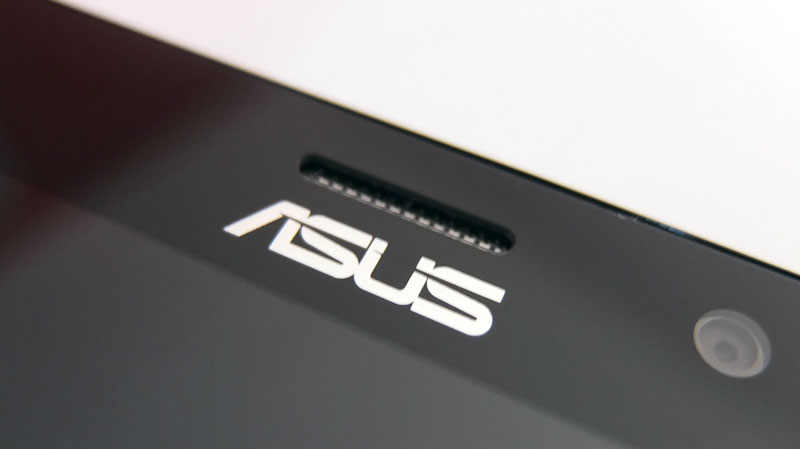
The front facing camera does a good job in most situations. The wide field of view comes in handy for group selfies, but the camera struggles in low light.
OS, UI and Everyday Use
This is the first Asus phone to ship with Android 5.0 out of the box, but we are not looking at stock Android. In fact, the ZenUI skin is not just a launcher with a few tweaks, it’s a big overhaul of Android 5.0, with lots of additional features and bloat.
It’s an evolution of the company’s previous ZenUI incarnations, and while it offers a few nifty features, we think Asus overdid it. The app drawer is still there, you can pinch to zoom and rearrange home panes, toggles and customisation menus are easily accessible, but at the same time ZenUI is too “busy” and features some throwbacks to Android 4.x in terms of appearance.

One of the few things that will let you know you are dealing with an Android 5.0 device is the rolodex style task manager, but that’s about it. The phone supports a number of useful gestures, you can shake it to take screenshots, double tap to lock and unlock, launch the camera or browser by drawing letters on a locked device and so on. There is also a nifty feature for one handed use called Quick Trigger. It basically allows you to resize the screen by double tapping the home button. We’ve seen similar ideas implemented by other vendors, and it works well.
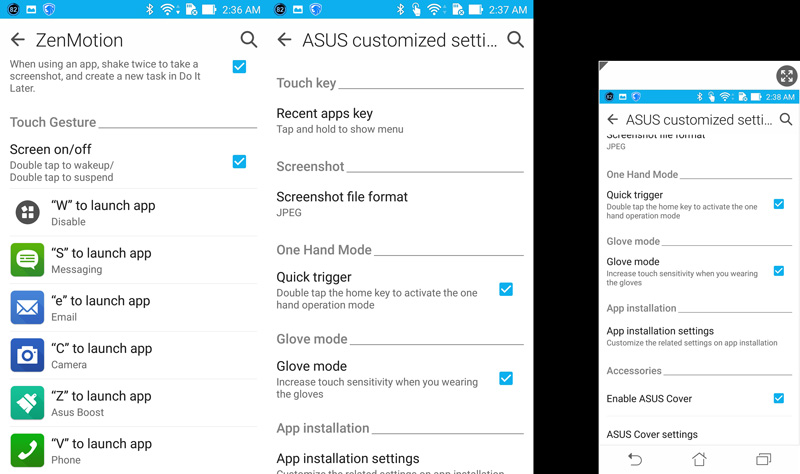
Bloat is another issue.
The Zenfone 2 comes preloaded with numerous Asus apps, some of which are quite useful, but the majority is bloatware. The phone has a custom phonebook and dialer, with a lot of integration. It works quite well and we liked a lot of the tricks implemented by Asus designers, as they work quite well on an oversized device like the Zenfone 2.
The messaging app is skinned as well, but it’s done rather well. The Asus keyboard works well, but the appearance is something else. It looks dated. Luckily you can tweak the appearance by reducing its size, because the keyboard is simply too tall by default.
We did not like the Asus browser. It features an extra navigation bar at the bottom, which is a bit too much. You don’t really need it, yet it takes up a lot of room, especially in landscape mode. The other problem is power consumption. We found that the browser app uses a lot more juice than Chrome.
Ergonomics are not a problem for the Zenfone 2. While it is a big device, the curved sides ensure a lot of grip and help make it look and feel thinner. The power button is placed at the top, which is problematic given its size, but a simple double tap takes you to the unlock screen, so you won’t have to press the power button that often. The rear mounted volume rocker is still a subject of controversy, although it has been on LG phones for a while. Some love it, some hate it, but we found the placement quite convenient.

The textured finish stands up to fingerprints and grease in most situations. It also offers a bit of extra grip compared to satin or glossy finishes. The removable back hides all the slots, but the 3000mAh battery is not removable. The tough cover can be tricky to remove, but once it's in place, it won't budge.
Although 3000mAh may sound like a lot at first glance, it’s nothing spectacular in this market segment. The Zenfone 2 has to deal with a big, high resolution screen, and it’s powered by a relatively powerful processor. Battery life is not spectacular, but you could get up to two days of (very) conservative use. If you use a lot of data and keep the screen on for a few hours a day, you should still be able to make it to the next morning. We could not escape the feeling that the phone would have done even better had it not been for Asus bloat, not to mention the stock browser.
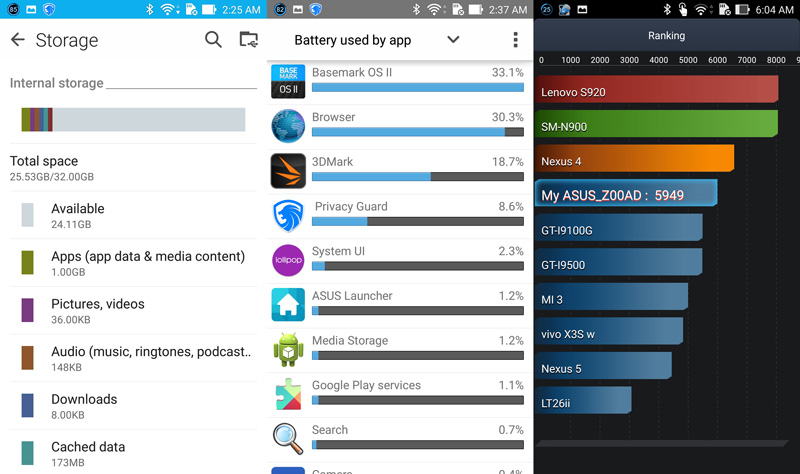
The good news is that Asus uses a couple of fast charging tricks. Provided you have a good charger, you can recharge the battery upwards of 50% in less than 45 minutes. Asus claims up to 60% in 39 minutes using its 18W BoostMaster adapter, but it’s only included with the flagship 2.3GHz model, so we didn’t get a chance to try it out.
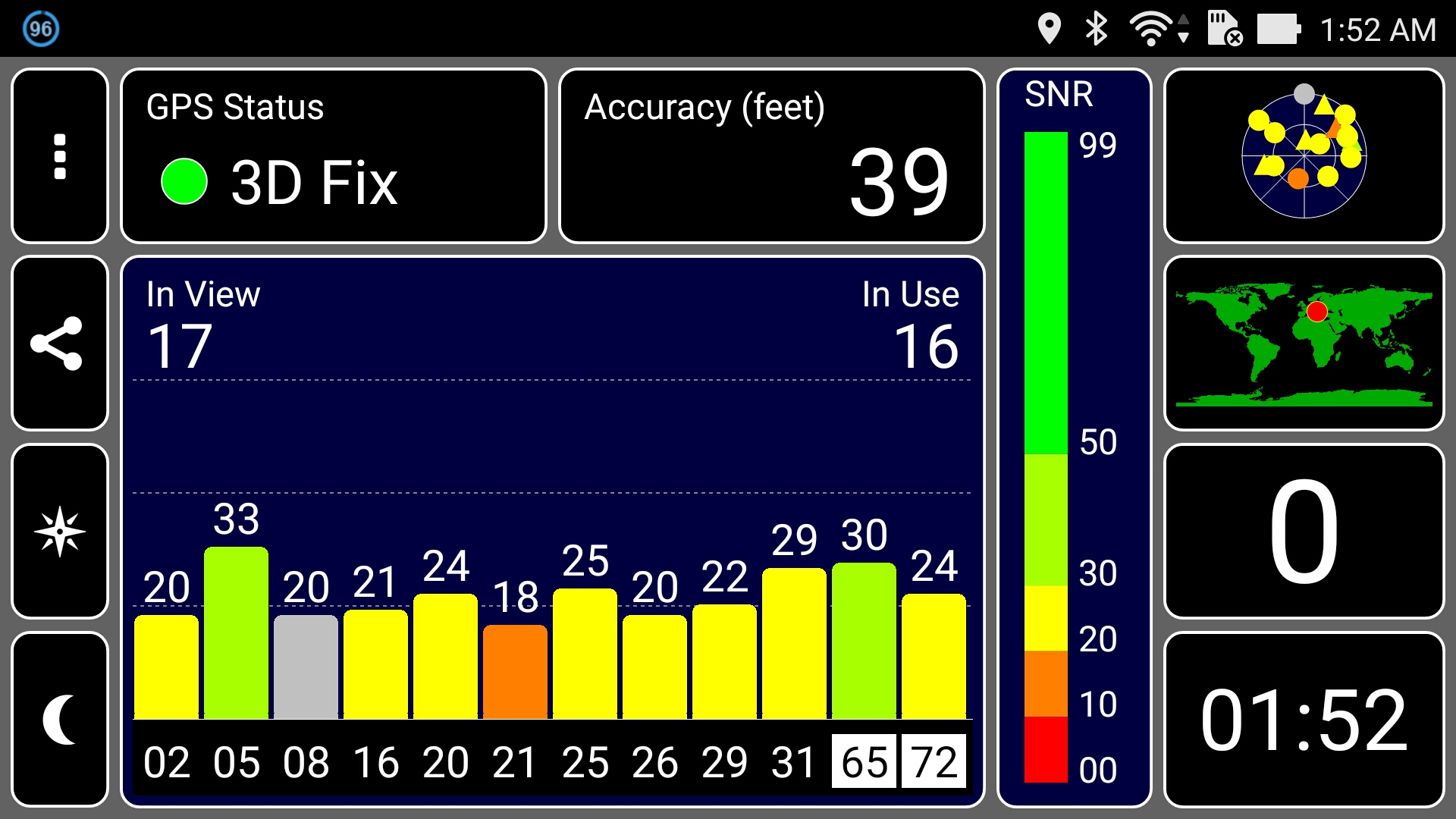
We had no trouble getting a GPS lock indoors, with average SNR and accuracy readings. GPS performance used to be an issue on non-Qualcomm phones, but luckily the latest Intel and MediaTek platforms tend to be just as good.
Overall, we had absolutely no issues using the Asus Zenfone 2 as our daily driver.
Conclusion
The new Asus Zenfone 2 is a step in the right direction. Asus does not want to take on the big players head on, at least not in the flagship segment, so the Zenfone 2 is going after the pseudo-flagship or upper mid-range market. This means it doesn’t exactly offer the performance of modern day flagships like the Samsung Galaxy S6 or HTC One M9, but overall it is a compelling all-round design, and offers good value for money.
The bad news is that the ZenUI is a bit too much for my liking, and tries to be too different to stock Android 5.0. It has some nifty features and thanks to the powerful processor with 4GB of RAM, it’s smooth as silk. However, it just feels too busy – from the lockscreen to the settings. The camera is underwhelming and we expected a bit more from such a device. I've seen similar, or superior cameras on $200-$250 devices.
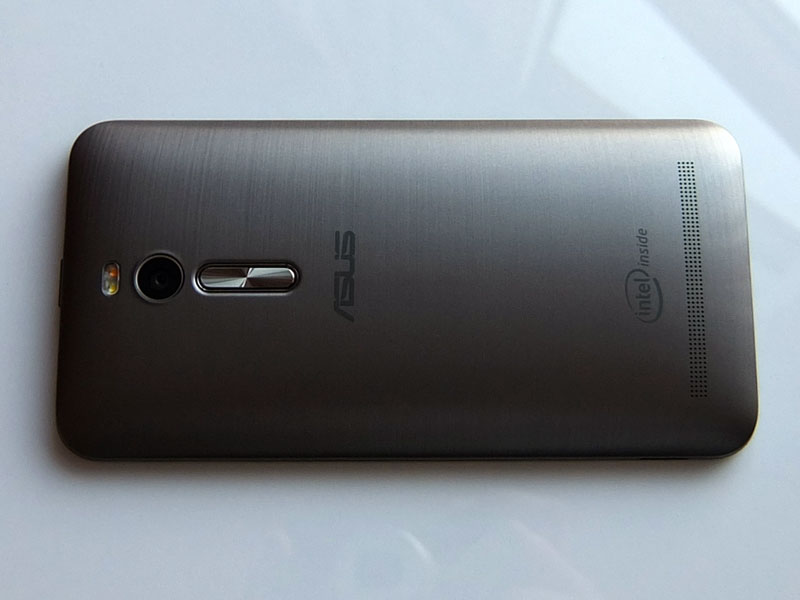
Luckily the camera is the only bit of hardware that doesn’t meet the grade. The screen is average, but good given the price point. The processor is on a par with last year’s flagships and can even give some 2015 flagships a run for their money. Throw in 4GB of RAM and 32GB of speedy internal storage, and you end up with an excellent hardware platform that can stand the test of time.
I also liked the design. Yes, it’s plastic, but it’s damn good plastic and most people who saw the sample thought it was brushed aluminium. It looks premium and the curved back with brushed accents on the front and buttons gives it a degree of personality.
The Zenfone 2 is a very nice device for the money, but this causes a bit of problem – what sort of money? Which version should you buy, and in which region? It’s a tricky question and the answer depends on where you live and whether or not you need 4GB of RAM. The Zenfone 2 is still not available in all markets, but if you really want one, you can order it online. Personally, I feel the T3560/4GB model, which the Fudzilla team tested, hits the sweet spot. The regular price is $325 (in case you miss the $50 coupon rebate), so it’s still not too pricey and if you don’t absolutely need a marginally faster processor and 64GB of internal storage, there’s really no point in spending $100 extra on the flagship model. The entry-level version with 2GB of RAM, 16GB of internal storage and the Z3560 processor is an interesting value proposition, as it goes for $259.
Oddly enough, Asus claims four in five Zenfone 2 units are shipped with 4GB of RAM, so few people are choosing the entry-level version. Ultimately it’s up to you. The Zenfone 2 is a great product, but I believe you get the most bang for your buck if you opt for the reviewed $325 version. Spending $65 less on the entry-level 2GB model sounds very tempting as well, especially when you look at the competition in the $250 segment.
Asus Zenfone 2 Pros and Cons
Pros
- Value for money
- Good build quality, sleek design
- Poweful SoC and 4GB of RAM ensure excellent multitasking performance
- Dual SIM, dual standby
- Clever gestures and UI tweaks make it more manageable
- Fast charging capability
Cons
- Mediocre camera – we’ve seen better on cheaper phones
- ZenUI fails to follow Android 5.0 design language
- Bloatware
- Dim screen on Auto brightness
- Bulkier than most 5.5-inch devices


